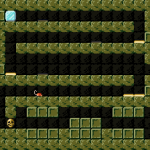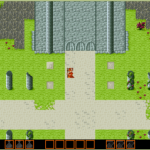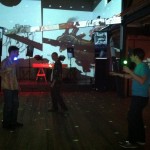
One of the great things about living and working in the Emeryville area is the local game development scene. Case in point: this afternoon, at the local coffee shop I ran into none other than the Chris Hecker, developer of Spy Party. We had spoken before briefly after a talk he gave at UC Berkeley, but this was the first chance I got to really chat with him.
Chris is the nicest guy ever, and was gracious enough to give me an hour out of his work day to check out Escape Goat and give me some feedback on it. Laptop only, and I had left my 360 controller at home. Chris happened to have one on him. Preparedness.
I got some great feedback on “initial impression” details such as the tutorial and mouse summon controls. The real value was in Chris’s perspective as an uber indie artist (he might even say perfectionist?) which is a new role among my playtesting group. (To contrast, an actual quote from my friend Ryan: “You’re giving them too much for $3. Get this thing out the door.”)




